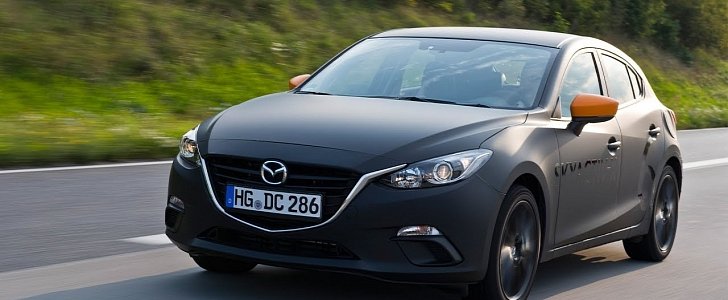For a couple of years now, we've been wondering where Mazda's EV was. There was talk about borrowing hybrid tech from Subaru or Toyota, but that hasn't happened yet. It's because the Japanese automaker is heavily invested in the new SkyActiv-G technology, which will make the 2019 Mazda3 both more powerful and economical.
This is good news for all of us who are dreading a future without the sweet sound of an internal combustion engine. And while Audi is trying to save its conventional cars by finding 5% here and there, the next Mazda3 will be 20 to 30% efficiency gains.
This new 2-liter SkyActiv-X engine is supposed to have a supercharger, so it also makes more power. We're told that it produces around 190 HP and around 230 Nm. We're not even sure most people need that much power. But in 2019, this could be the only compact hatchback we want to buy.
Speaking of which, the platform is also new, still hidden under the familiar body of the current Mazda3. It's supposed to have a more compliant ride and better sound insulation, both things that we've seen on the new CX-5 as well.
Of course, Mazda didn't discover the supercharger. In fact, forced induction isn't even the best way to get good gas mileage in the real world. No, it's actually there to get the right kind of fuel-to-air mix. On top of that, the engine gets the best of both diesel and petrol engines by having two types of ignition. However, engineers are understandably reluctant to reveal their secrets.
Mazda wouldn't do this if it didn't think the internal combustion engine doesn't have a future. But this is in stark contrast with most major automakers who say they are going to stop all their research in this field soon. Who's right? That's not for us to decide. But we see a gap opening in U.S. regulations that could allow ICEs some rest.
This new 2-liter SkyActiv-X engine is supposed to have a supercharger, so it also makes more power. We're told that it produces around 190 HP and around 230 Nm. We're not even sure most people need that much power. But in 2019, this could be the only compact hatchback we want to buy.
Speaking of which, the platform is also new, still hidden under the familiar body of the current Mazda3. It's supposed to have a more compliant ride and better sound insulation, both things that we've seen on the new CX-5 as well.
Of course, Mazda didn't discover the supercharger. In fact, forced induction isn't even the best way to get good gas mileage in the real world. No, it's actually there to get the right kind of fuel-to-air mix. On top of that, the engine gets the best of both diesel and petrol engines by having two types of ignition. However, engineers are understandably reluctant to reveal their secrets.
Mazda wouldn't do this if it didn't think the internal combustion engine doesn't have a future. But this is in stark contrast with most major automakers who say they are going to stop all their research in this field soon. Who's right? That's not for us to decide. But we see a gap opening in U.S. regulations that could allow ICEs some rest.







